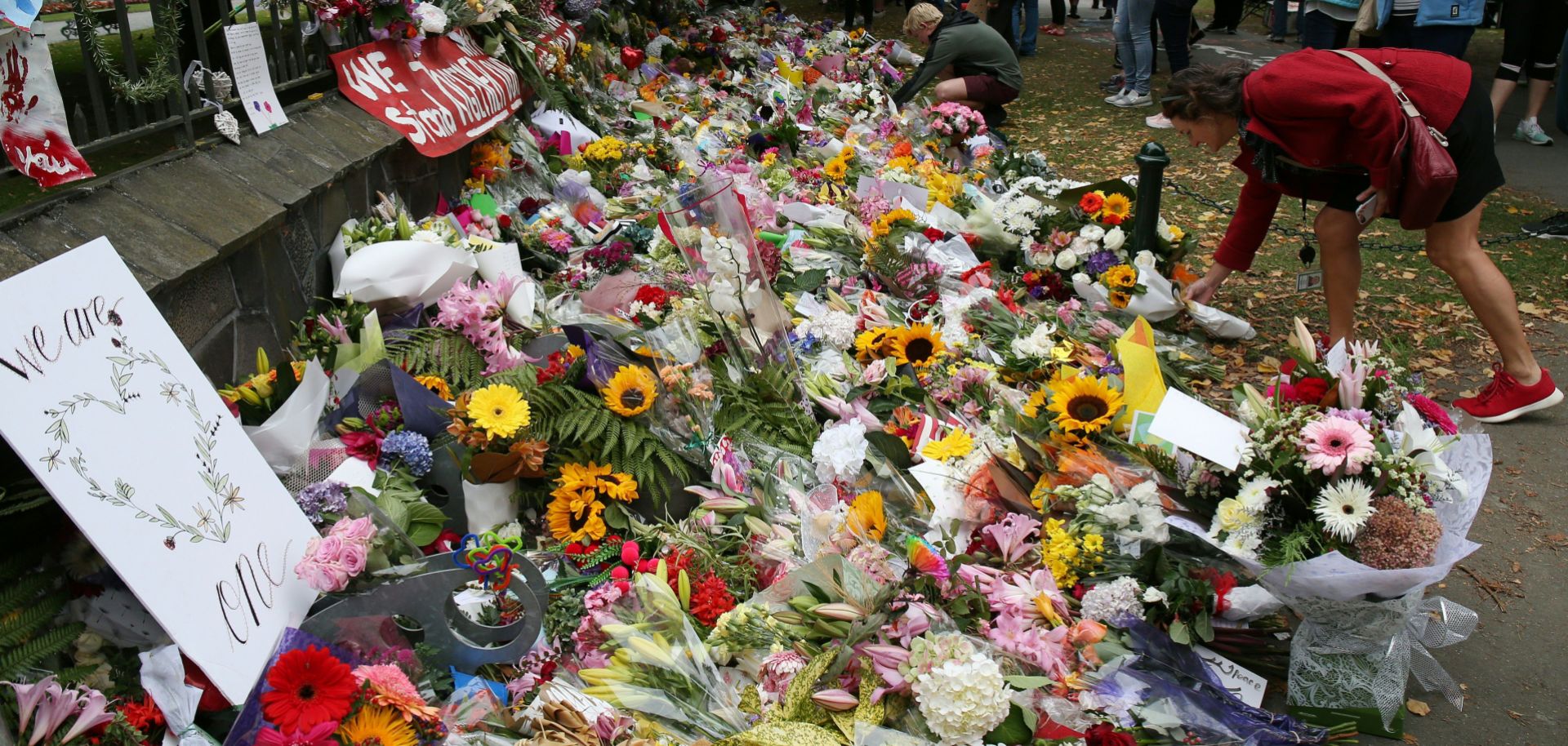COLUMNS
What the New Zealand Attack Tells Us About the State of Terrorism

Mar 19, 2019 | 10:00 GMT

People place flowers in a tribute after a white supremacist shot and killed 49 civilians at two mosques in Christchurch, New Zealand, on March 15, 2019.
(DAVID MOIR/AFP/Getty Images)
Highlights
- Although the Christchurch killer worked alone to attack his targets in southern New Zealand, he clearly felt connected to a global movement and believed that he was part of a historical continuum.
- The quick dissemination of the killer's white supremacist manifesto and livestream video of the attack online illustrate how the internet, social media and cheap mobile cameras have empowered terrorist actors to become their own forms of mass media.
- The killer also cited jihadist attacks in Europe as part of his motive — highlighting how terrorism can become a vicious cycle that spawns other acts of terrorism.
Subscribe Now
SubscribeAlready have an account?
